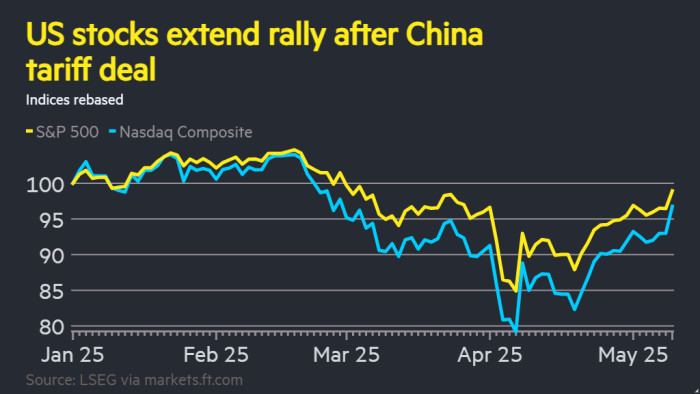Investor sentiment was exuberant on Monday morning as US stocks soared and Treasury yields rose after the US and China agreed to slash tariffs.
“Markets are defaulting to assuming we’re now in a 10-30 world: 10 per cent (tariffs) on most of the world, 30 per cent on China. Peak tariffs are very much in the past. We will take a growth hit this year, but that is different from a recession,” said Ajay Rajadhyaksha, global chair of research at Barclays.
The shift over the weekend means that the Federal Reserve could hold off on interest rate increases until September, pricing in the futures market indicated. Even if a recession in 2025 is averted, tariffs pose an inflationary threat.
“The Fed looks genius right now because they didn’t rush to cut rates,” said Rajadhyaksha.
Still, tariffs in the 10-30 per cent range mark a radical change from no US tariffs, the state of the world when Trump was elected president.
“We are in a significantly worse position in terms of growth at the end of 2025, versus the end of 2024,” said Rajadhyaksha. And the volatility and uncertainty around the release of the tariffs means “there is some near-term damage that has been done to US assets. It remains to be seen if that will persist.”
https://www.ft.com/content/985a553c-d98f-47db-bf03-41e65d336675


